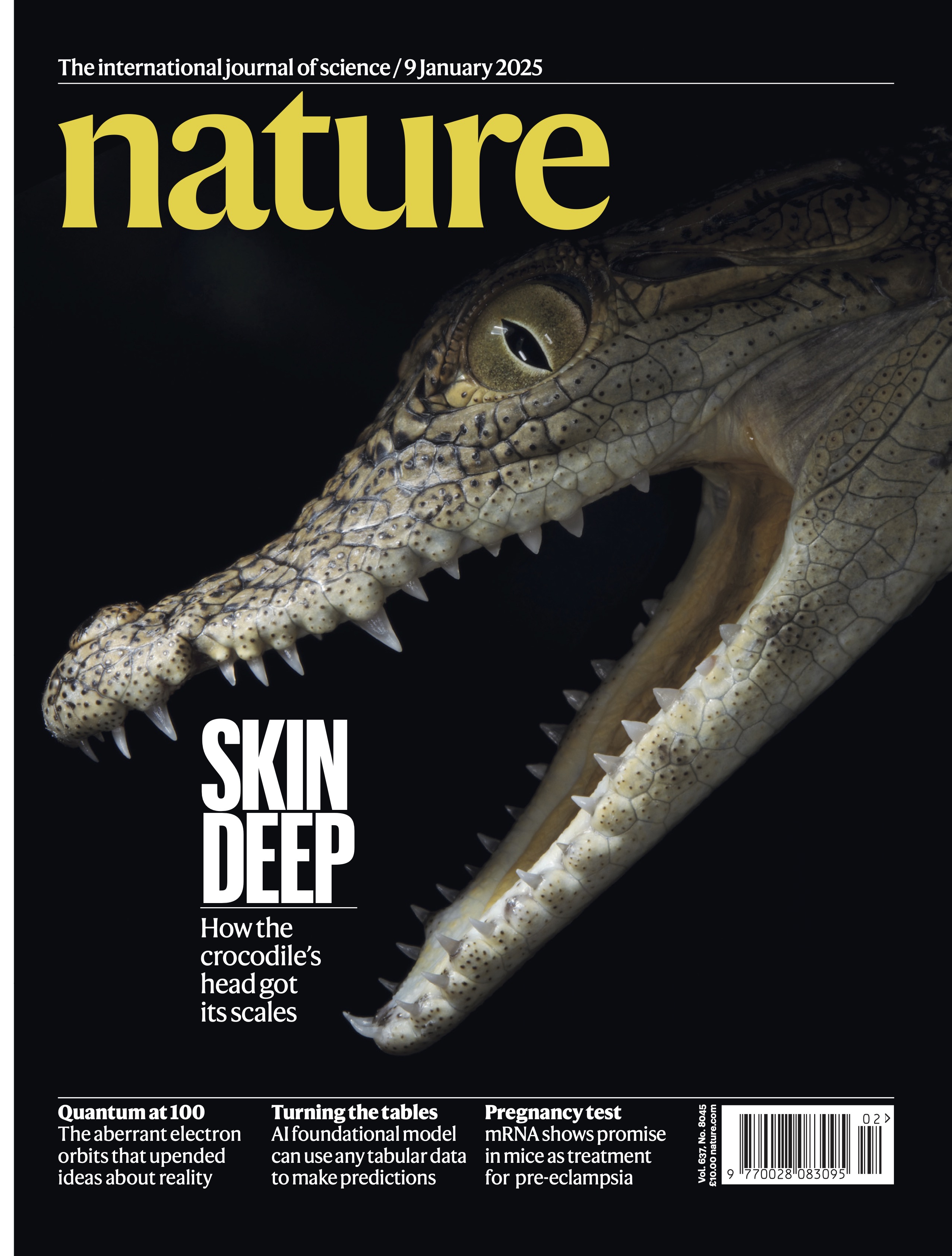
Cover image: M. C. Milinkovitch & A. Debry
The cover highlights the mechanically self-organized pattern of scales on the head of a young Nile crocodile (Crocodylus niloticus). Typically, vertebrate skin appendages such as scales, hairs or feathers develop as genetically controlled units whose spatial patterning is dominated by a gene regulatory network of signalling molecules during embryo development. The patterning of scales on a crocodile’s head is an exception because it seems to emerge from a mechanical process whose precise nature and origin are unclear. In this week’s issue, Michel Milinkovitch and colleagues resolve this mystery. Working from Nile crocodile embryos, the researchers generated a 3D model of crocodile head patterning and found that the borders of the scales are skin folds that mechanically self-organize through compressive folding. This compressive stress results from the two layers of skin, which have different stiffnesses and grow faster than the underlying tissues.
Our results are summarised here.
The original article is available here:
Self-organized patterning of crocodile head scales by compressive folding
Gabriel N. Santos-Durán, Rory L. Cooper, Ebrahim Jahanbakhsh, Grigorii Timin, Michel C. Milinkovitch
Nature 637, 375–383 (2025)
DOI: https://doi.org/10.1038/s41586-024-08268-1